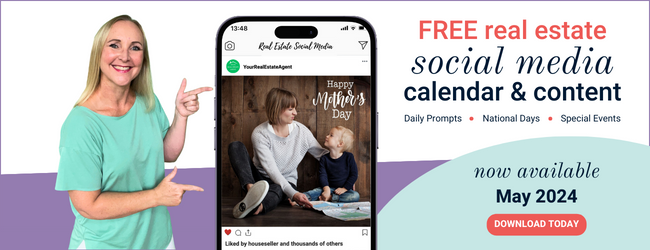The greatest benefit to segmenting and tagging your contacts (based on their behaviour) is that you’ll be able to easily see who, out of the thousands of people on your contact list, are currently taking an interest in your communications and are actively looking to buy, sell, rent or lease a property.
In my last article, Prospecting: Your real estate contact list is laden with gold, I discussed the opportunity to improve your real estate prospecting by regularly reviewing and keeping the contact records in your database up-to-date. I gave you actionable tips to help you tackle this task. After all, your contact database is laden with prospecting gold!
This week we are discussing the opportunity you have with segmenting and tagging contacts in your database based on a person’s behaviour. Many CRMs are so smart that they can segment your contacts for you ‘auto-magically’, removing the need for you to do the segmentation manually.
How to segment your real estate contacts
Once your contact data is up-to-date, you should explore the features in your real estate CRM to ensure it gives you the ability to categorise contacts into groups of people with similar interests or needs on your behalf.
What we need is for your database to allocate people into the following groups for you (when they interact with your emails or website);
- Renters
- Tenants
- Buyers
- Owners
- Sellers
- Landlords
By segmenting your contacts, you’ll be able to tailor your marketing communications with messages specific to the groups’ needs, increasing the relevance and effectiveness of your email marketing campaigns to the reader.
TIP: Segmentation is an advanced marketing technique and is only worth setting up if you are going to create content, e.g. articles, emails, ads specific to that group of people. If you only ever send out blanket communications (about your company or current listings), then you are missing an opportunity to personalise your messages to appeal to prospects.
Below are three examples of how this can be achieved.

Case study #1 – Tracking renters and tenants
In this example, let’s say Jane (and her boyfriend) attend an open home for a property that’s for lease. Jane scans your QR code when entering the property, fills in her contact details, gets added to your database and is auto-matically tagged as a ‘renter’.
After a couple of weeks, Jane is a successful rental applicant and leases one of your properties. When Jane’s contact record is attached to the rental property in your CRM, her ‘renter’ tag is removed, and she gets tagged as a ‘tenant’ instead.
If Jane had not leased one of your rental homes, she would remain in your database as a renter until such time that either i) she opts to unsubscribe from your properties for rent emails, or ii) she doesn’t open an email for 4 months (your choice), and the system automatically unsubscribes her.

Case study #2 – Keeping tabs on home buyers
Let’s say you have another tenant, Gloria, who has rented in your neighbourhood for many years. Gloria has been saving a deposit for a home and has finally reached a position where she is comfortable to start looking for a property to buy.
Gloria and her partner attend an open home at a home that’s for sale. Gloria provides her details on entry and gets tagged as a ‘passive buyer’. Gloria stays as a ‘passive buyer’ for several months and is logged as having attended several home opens at properties for sale through your agency.
The tags show that she is predominantly looking at 3-bedroom houses in your primary suburb. Your CRM is now building a profile of Gloria’s interests and activities (which we also refer to as behaviours).
Eventually, Gloria turns up and registers for one of your property auctions (an alternate scenario is that she puts in an offer on a home), this action gets recorded in your database, and Gloria is automatically tagged as an ‘active buyer’, because she has moved from looking at homes to trying to make offers on property now.
A month later, Gloria successfully bought one of your properties. She exchanges and then settles on the property, which triggers her contact record to have the ‘active buyer’ tag removed and the ‘homeowner’ tag added instead. The date the property settled and the sold price are recorded against the property in your database, and Gloria is recorded as the homeowner.
From time to time, you might check in with active buyers to see if they have bought a home through another real estate agency, and if so, you might need to manually update their record to say ‘homeowner’ and link their record to the property address. Alternatively, i) a passive or active buyer might opt to unsubscribe from your properties for sale emails, or ii) if they do not open an email for 4 months (your choice), you can set the system to unsubscribe them automatically.
If you learn that the home was bought as an investment, you can change them to ‘landlord’.

Case study #3 – Identifying landlords
An alternate way to tag your contacts is based on the pages they visit on your website. Let’s say Pradeep owns an investment property and is checking out your real estate website to see if you would be a suitable property management agency.
Pradeep arrived on your real estate website in the first instance because he saw an article you posted and advertised on social media about the importance of rent reviews. After reading the article, Pradeep goes on to check out your recently leased properties (for a price comparison to his own property) and then reads your property management services page on your website.
Each time Pradeep clicks a link in an email or visits a page on your real estate website (that relates to property management), he gets scored a point in the ‘landlord interests’ field on his contact record (a similar activity can be set up to occur for property sales related content). Once his property management score hits 5 points (i.e. 5 pieces of content read), he can be automatically tagged as a ‘landlord’.
At any moment in time, we can see what Pradeep’s total score for engaging with your property management content is and how engaged he is when compared to other landlords in your database. The landlords with the highest scores, or activity in recent times, are the people you want to touch base with.

Case study # 4 – We can wear many property hats
Contacts in your database may have many property-related hats, so they may end up with several tags assigned to their contact record reflecting their interests and behaviours.
For example, Jacinta might be a local ‘homeowner’ living in a 3-bedroom house, plus be a landlord with a 1-bedroom rental unit located in the same neighbourhood. You therefore have two opportunities to service Jicinta’s property needs; property sales and property management. Jacinta may also be tagged in your database as a buyer at some point.
Ultimately the more you get to know your contacts through their behaviours and interactions with your real estate website and marketing messages, the more honed in you can become on the services that they need.
Email requests to update real estate records
If you don’t have a behavioural tagging system in place, you could send a periodic email out to your contacts asking them to update their details and clarify whether they own a property and what type of property they own. Not everyone will answer your request, but it’s a good way to prompt people to remember that your real estate business is on hand to serve them.
Combining marketing tags with timelines
A smart real estate CRM will also be able to show you who has been actively clicking on links in your emails and visiting pages across your website.
You can pull up your contact lists to show hot prospects for various timelines such as the last i) 7 days, ii) fortnight, or iii) month and then ring your contacts to touch base and see what’s happening with them at this juncture.
Just remember to keep your tracking intel a secret. No one wants to be given the Spanish Inquisition or, worse yet, told that you can see exactly what they have been looking at on your real estate website. That’ll creep them out.
Simply check in by phone to see how they are enjoying where they live or how their investment property is tracking. And make notes for the next time they pop up on your active list, and you give them another call.
Plus, don’t forget that segmentation means you can now plan your marketing messages with different groups of people in mind.
If you’d like professional help with your contact management and marketing communications, do not hesitate to book time for your free 1-hour review with me, Melanie Hoole, to discuss your business.
Further reading
Other articles in this series include;


Join the Conversation - add your thoughts